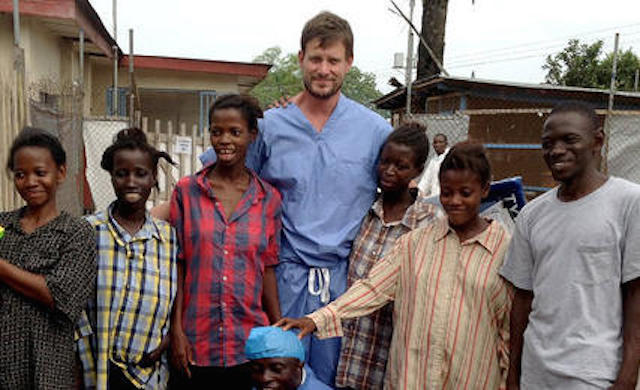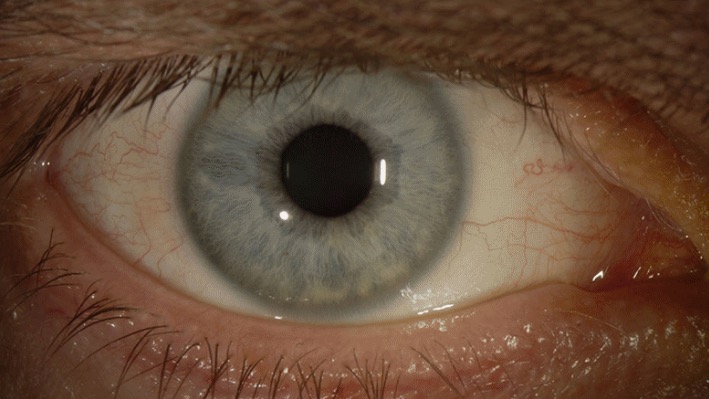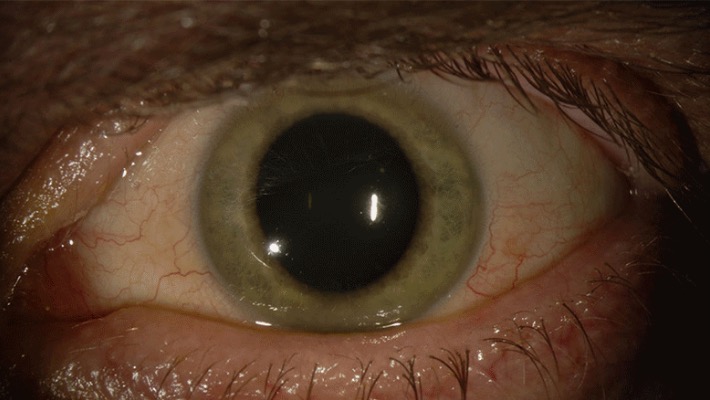
© New York TimesIan Crozier
American doctor Ian Crozier was treated for Ebola in Atlanta last year and declared free of the virus in his blood. But he had no way of knowing it still lurked in his eye.
At the time, his eyes were the least of his worries.
"There were lots of things sort of higher on the food chain," he told CNN's "Anderson Cooper 360." "I was struggling to learn to walk again."
But not long after, mild burning and light sensitivity afflicted his eyes.
Less than two months later, he was back at Emory University Hospital in Atlanta; testing showed the virus was still living in his eye.
PerplexedHis case has left doctors stunned and highlighted the need for eye checkups for Ebola survivors.
Crozier, 44, was hospitalized at Emory University Hospital for more than a month in September after contracting the disease in Sierra Leone, where he worked at a hospital.
At the time, the hospital said he was the sickest of all the four Ebola patients treated there.
Crozier was discharged in October, and about two months later, he developed eye problems and returned to Emory. Doctors stuck a needle in his eye and removed some fluid, which tested positive for the virus.
At the time, Crozier thought the problems were "an immune-related Ebola complication," but nothing to do with the return of the virus.
"
We certainly didn't think it was related to active and replicating virus in the eye," Crozier said. "As my sight started to go bad, it became clear that this was a very different animal."
No risk of spreading the virusDespite the presence of the virus in the eye, samples from tears and the outer eye membrane tested negative, which means the patient was not at risk of spreading the disease during casual contact, Emory said in a statement Thursday.
It did not name Crozier, but The
New York Times did. The
New England Journal of Medicine also released a study on the case. Crozier and Dr. Steven Yeh, an associate professor of ophthalmology at Emory University School of Medicine who helped treat him, were both listed as authors of the study.
Though the patient was not at risk of spreading the virus, all health care providers treating survivors, including eye doctors, must follow Ebola safety protocols, said Jay Varkey, assistant professor at Emory University School of Medicine.
Ebola patient for a second timeWhen the virus was found in Crozier's eye, the eye started losing its original blue hue. It turned green.

© CNN

© CNN
Bewildered, doctors tried different forms of treatment as he relived his Ebola nightmare.
They gave him steroids and an antiviral agent (which required special approval from the Food and Drug Administration, according to the
Times.)
His eye gradually returned to normal, but doctors are not sure whether it was as a result of the steroid shot, pill or his body's immune system.
While Ebola survivors in West Africa have reported eye problems, it's unclear how prevalent the condition is and how often it happens. Emory advises that Ebola patients should be monitored for the development of eye symptoms like pain, redness, light sensitivity and blurred vision.
Crozier said he hopes his case will bring light to the enormous challenges Ebola survivors face.
"You can imagine an Ebola survivor who's already been through their own personal hell," he said. "And as they emerge from that place, to then in a sense face the tragedy of going blind; it's a story that we must pay attention."
Epidemic slowly fadingOver the past year, about 25,000 people have fought Ebola infections. More than 10,000 have died, mostly in the West African nations of Liberia, Sierra Leone and Guinea.
While the intensity of the largest Ebola epidemic in history has died down, a few people are still newly infected each week.
At least 18 new cases of Ebola were reported in the week ending May 3, the latest World Health Organization report said. All were in Guinea and Sierra Leone.
But as the number of new cases plummet, many unknowns remain on the aftereffects of the virus.
Comment: "It wouldn't be surprising, in a very severe infection that is spread all over the body, to have some long-term damage to sensitive tissues like nerves," In addition, after a patient is cured, the virus may also persist in some parts of the body, including the eyes, and cause inflammation and vision problems, Goodman said.
After the 1995 Ebola outbreak in the Democratic Republic of the Congo, about 15 percent of survivors developed eye problems, such as eye pain and vision loss. In the most recent Ebola outbreak in West Africa, there have also been reports of survivors with vision problems, according to the World Health Organization (WHO). These eye problems typically respond well to treatment, but if left untreated, they can lead to blindness, Goodman said.
Long term effects of Ebola?